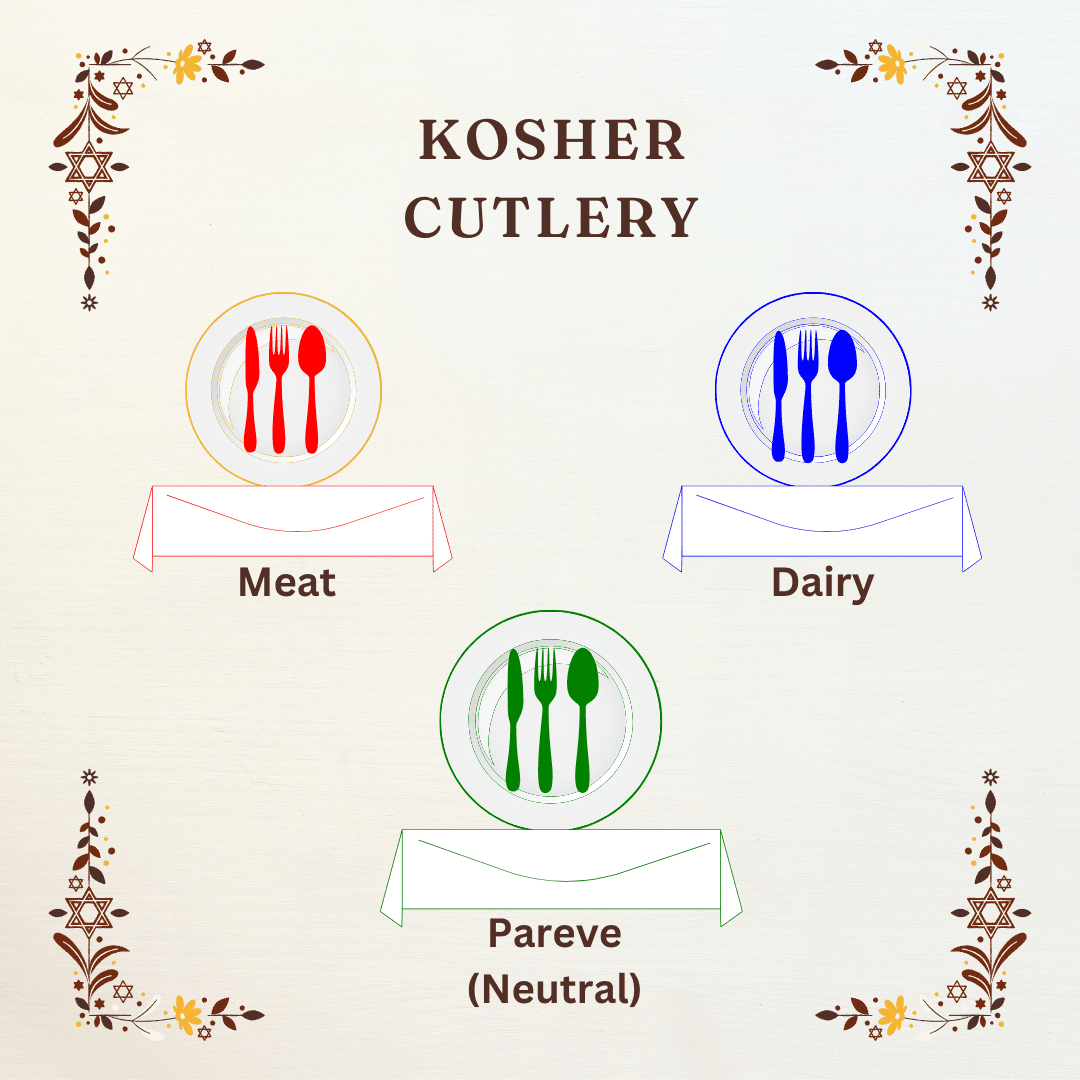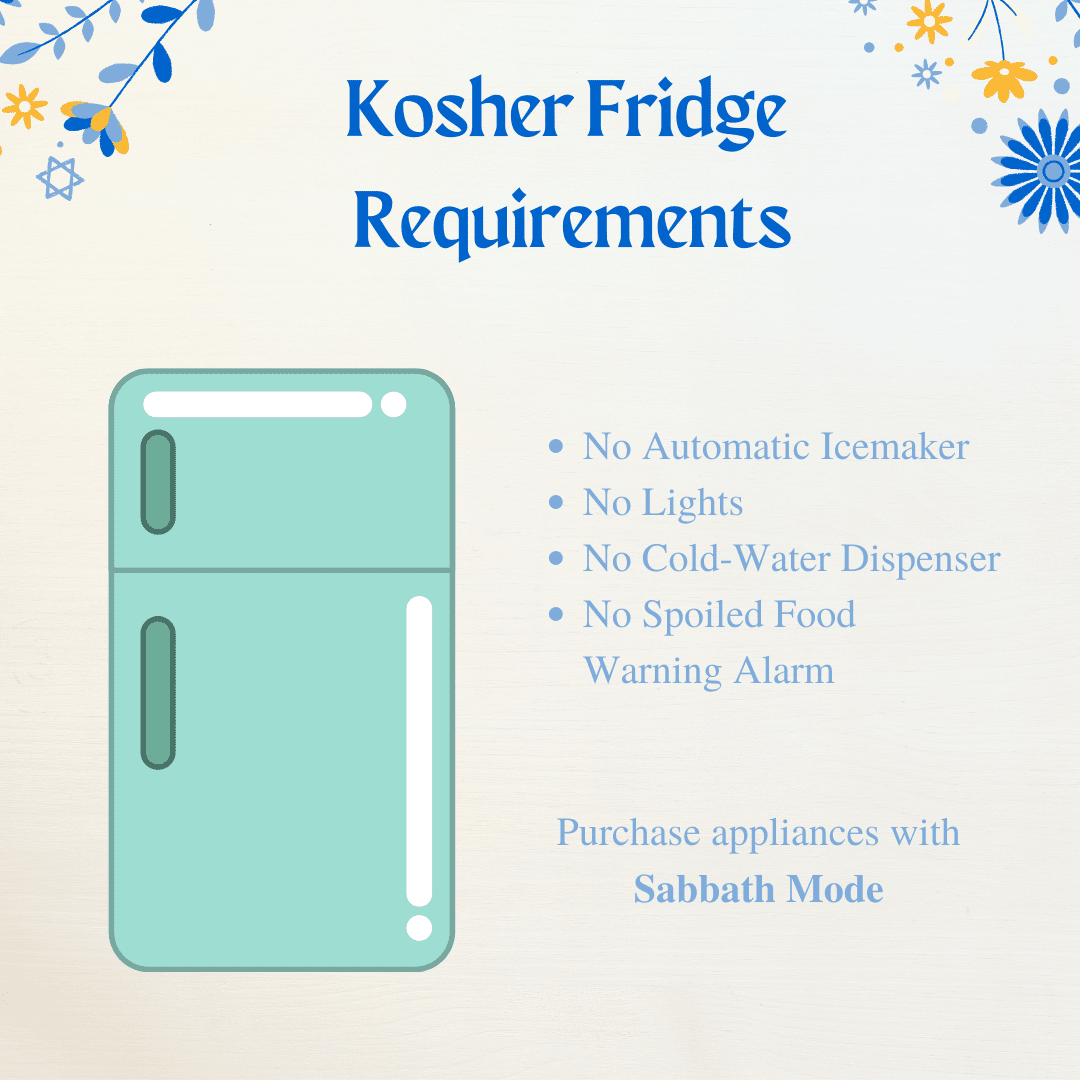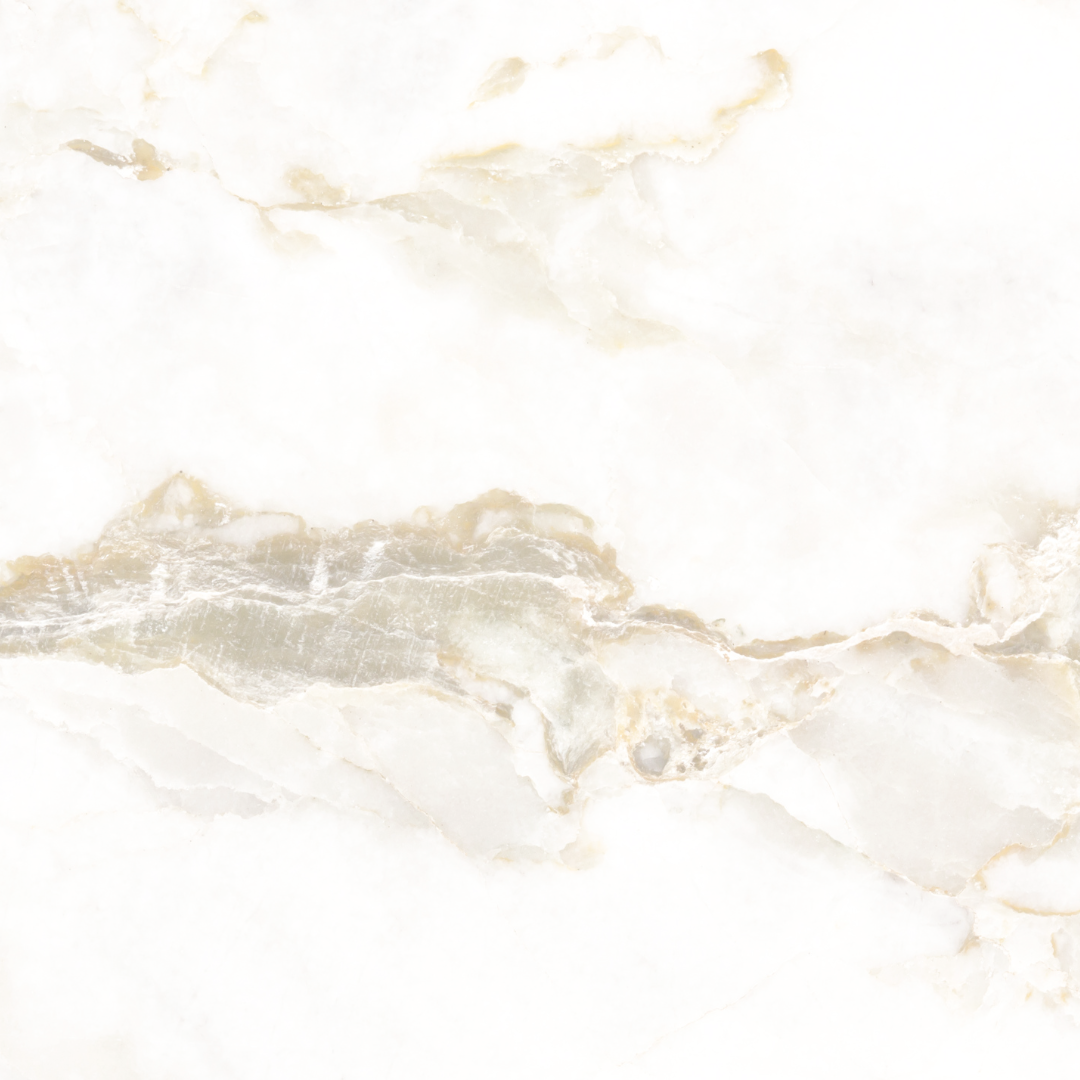
Table of Contents
A kosher kitchen must adhere to many rules to ensure everything is clean and effectively implementing Kashrut (Jewish dietary laws). As time has passed, some sects of Judaism have become lenient on following certain rules, allowing the individual to choose whether they wish to follow it or not and how strict they wish to adhere to said rules. Orthodox Jews are very strict when following kosher rules, while Conservative, Reform and Modern Jews opt to pick and choose what works for them. No matter which group you’re affiliated with, it’s important to know what the rules are for a kosher kitchen and how you can apply them in your home.
Rule 1. Separation of Meat and Dairy
This is the rule from which everything flows. No matter which group you identify with, the primary rule of being kosher and having a kosher kitchen is the complete separation of meat and dairy. Meat and dairy can never be mixed while being prepared, served, eaten, or cleaned. This means they cannot be placed in the same pan, cooked in the same oven, eaten at the same time, or cleaned in the same sink or dishwasher.
Rule 2: Individual Utensils and Dinnerware
We cannot stress this enough that meat and dairy should never be combined. The best way to achieve this is by having separate utensils as well as plates and glasses.

Rule 3: Tableware
Tableware such as tablecloths, napkins and placemats should match the corresponding food utensil will make sure your meat and dairy dishes are never served together. When a meat dish is out, all the meat tableware should be available. When it is time to switch to a dairy dish, the entire table must be cleaned, tablecloths removed and replaced with the corresponding dairy tableware.
Rule 4: Organized System
Having an organizational system is imperative in keeping your kitchen kosher. When following rule one, the best course of action is to buy two sets of everything that follow an easy-to-understand system. A popular organizational system Jewish families use is color-coding. Simple and contrasting colors allows quick recognition of which utensil and tableware goes with their corresponding ingredient: red for meat, blue for dairy and green or yellow for neutral foods.
Rule 5: Cooking Appliances
A kosher kitchen needs to have two sets of cooking appliances, dedicated as either meat or dairy. When cooking in an oven or microwave, steam from the food rises and sticks to the inner walls of the appliance. This residue can mix with other foods placed inside, breaking kosher rule 1. Having separate ovens and microwaves ensures complete isolation of ingredients.
When purchasing new appliances, see if they offer Sabbath mode. This feature allows Jews to observe their religious days of rest by having the electrical and lighting systems turned off.
Rule 6: Refrigeration
Meat and dairy need to be kept cold to stay fresh. They can be stored together in the same fridge but must be on separate shelves or placed in different drawers. In case of spillage, the contaminated shelf must be carefully removed and thoroughly cleaned. Alternative solutions are installing a second fridge or having a smaller mini-fridge to store the food item used less. To observe Jewish holidays of rest, kosher refrigerators should have no lights, no automatic icemaker, no cold-water dispenser, and no warning alarm for spoiled food.

Rule 7: Sink and Dishwashers
Meat and dairy dishes are not allowed to be cleaned in the same sink or dishwasher. Separate sinks must be installed to maintain kosher etiquette. Some Jewish sects are open to a single sink if the sink has been thoroughly cleaned and let sit to rest for several hours. The best practice is to install 2 sinks in your kitchen with color-coded sink racks for drying. Alternatively, a prep sink can be used as a substitute for another full-sized sink.
Kitchen design expert Lisa Eisen suggests that bigger is better regarding sinks. Noting many clients are often requesting for bigger sinks when upgrading to make sure there is less splatter of water when cleaning big pots.
Installing two dishwashers are also needed to keep your kitchen kosher. Modern technology has made dishwashers very compact where panel ready dishwashers can be placed in cabinets. These dishwashers use less water than normal dishwashers and have independent plumbing, ensuring meat and dairy never interact.
A single dishwasher is allowed by some groups, but the dishwasher must be heavily cleaned, the interior changed with different racks, and a waiting period ranging from a couple of hours to a full day, depending on how strict you are with following this rule.
Rule 8: Sufficient Storage
To accommodate all the extra appliances and utensils, a kosher kitchen must have ample storage space. While following rule 1, kosher foods should be kept on different shelves and utensils kept in different drawers. Use a small color corresponding sticker or sign indicating which food item that cabinet or drawer contains for better organization.
Lisa adds that many clients love going bigger with their kitchens. The more space they have, the easier it will be to keep everything organized.
Rule 9: Kosher Foods Only
A kosher kitchen must only serve kosher foods. Kosher products are products made from a food-manufacturer where the process was overseen by a rabbi and the food was prepared through Jewish dietary laws. Shopping for kosher foods can be easily found by the symbols K or OU meaning the food is kosher. Other symbols include M or Glatt for meat, F for fish, D or DE for dairy and, P for Passover. A company known as Star-K provides kosher certified information for food, appliances, and certification.
.png)
Rule 10: Solid Surface Countertops
Lisa Eisen notes that it depends what you want to install and what your community agrees to. Granite was originally considered kosher when boiling water is poured on it, but it is porous which some may not like. Quartz is non-porous and comes in a variety of colors, but since it is an artifical stone, some communities may not consider it kosher because it is not natural.
"It's all based on personal preference, what the community says and what the Rabbi suggests."
Lisa also mentions that it's easier to have separate meat and dairy counter space. Having a burner or appliance can act as a natural divider.
Rule 11: Kitchen Must Go Through Koshering Process
For a kitchen to be deemed kosher, it must go through the koshering process. This is a multi-step ceremony where all non-kosher foods are thrown out and the entire kitchen is wiped clean. Once the kitchen has been meticulously cleaned, it must not be used for 24-hours. This waiting period allows the non-koshered food remnants to leave the now clean space. After the waiting period, a rabbi performs a burning ceremony by using a blowtorch to cleanse the utensils and pouring boiling water on all surfaces. This process should only be done by a trained professional as not to damage any appliances or start a fire. Some dishwashers come with a self-cleaning high-heat cycle which can be used in the koshering process.
Follow these guidelines and your kitchen will be kosher for years to come.
















 The article helped me immensely
The article helped me immensely
 I’m now more informed on the subject
I’m now more informed on the subject
 I have questions about Marble.com
I have questions about Marble.com
 The article was not accurate at all
The article was not accurate at all
 There is a serious lack of information
There is a serious lack of information
 I have questions about Marble.com
I have questions about Marble.com